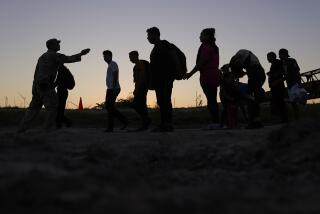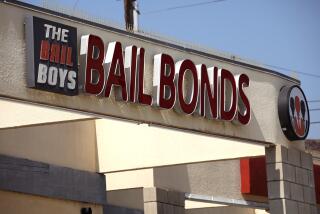Drunk Driving Arrests Dropping
- Share via
WASHINGTON — Increased public awareness and the threat of stricter penalties contributed to an almost 20% drop in nationwide arrests for drunk driving from 1986 to 1997, according to activists and a Justice Department study released Sunday.
At the same time, the number of people behind bars or on probation for driving while intoxicated soared to more than 500,000, a jump of 90%--an indication that drunk drivers are receiving tougher sentences.
Law enforcement officials and anti-drunk driving activists greeted the data as evidence that their efforts are persuading people not to drink and drive or are forcing them off the roads when they do. But, they added, the success reinforces the importance of educating the public about the dangers of drunk driving.
California had the 10th highest rate among the states for its rate of DUI arrests in 1997, an improvement from its 1991 ranking of sixth in the nation. The number of arrests per 100,000 drivers in the state fell from 1,561 to 949 during that period, the study said.
The drop in arrests does not reflect less enforcement, said Steve Kohler, a spokesman for the California Highway Patrol. “I think that what we’re seeing is a reflection of societal changes in attitudes about drinking and driving,” he said.
The study found that the rate of arrest for driving under the influence decreased steadily across the country from 1990 to 1994 and has since leveled off somewhat.
Kohler said police in California have used road patrols and sobriety checkpoints to catch drunk drivers. Those moves have been accompanied by more sentencing options, including longer probation times and the opportunity for prosecutors to try some cases as felonies.
“I think that there is a public belief that sentences have increased. There are more tools that the courts, the DMV and prosecutors can use,” said Ellen Sarmiento, a supervising attorney in the Los Angeles City Attorney’s office.
She added that her office has seen a slight decrease in DUI cases since 1990, but it still handles from 18,000 to 20,000 incidents of drunk driving per year.
Karolyn Nunnallee, national president of Mothers Against Drunk Driving, said she hopes the positive statistics don’t lead police and the public to become complacent in the fight against the problem.
“Pat yourself on the back,” she said, “but get back to work because there’s much to be done.”
She noted that almost 16,000 Americans died in alcohol-related car accidents last year. That number, although significantly lower than annual drunk-driving deaths in the early 1980s, remains unacceptably high, she said.
Jack Grant, an official with the International Assn. of Chiefs of Police, echoed Nunnallee’s reservations. “We’re not getting all [drunk drivers] by any stretch of the imagination,” he said.
Justice Department statistician Laura M. Maruschak said the aging of licensed drivers is another likely factor in the decline in arrests. Older drivers are less likely to drive drunk than their younger counterparts, said Maruschak, who wrote the report.
The study concluded that drunk-driving offenders are more often male, white, older and better educated than people incarcerated or on probation for other crimes.
Many of the offenders displayed signs of alcohol dependency and upon arrest had average blood-alcohol levels about twice the limit in most states. They are also often repeat offenders, the report said.
In 1997, the latest year for which data are available, Minnesota registered the highest rate of drunk-driving arrests. Rhode Island and Massachusetts had the lowest rates.
More to Read
Sign up for Essential California
The most important California stories and recommendations in your inbox every morning.
You may occasionally receive promotional content from the Los Angeles Times.










